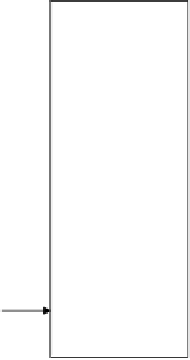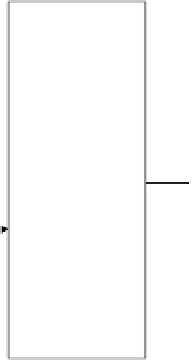Image Processing Reference
In-Depth Information
W
1
W
2
W
3
W
4
W
5
W
6
W
7
W
8
W
9
W
10
W
11
W
12
W
13
W
14
W
15
W
16
Cyan dot growth
function
c
C
m
Magenta dot growth
function
M
Mixing equations
Neugebauer
equation
R
(λ)
y
Yellow dot growth
function
Y
Black dot growth
function
k
K
FIGURE 7.19
Block diagram of the Neugebauer model for a color printer.
K
Y
M
C
FIGURE 7.20
Dot-on-dot halftone screen example.
The ideal dot-on-dot mixing model does not consider noise and misregistration
effects. Therefore, a combination of dot-on-dot and random mixing model is pro-
posed [31] to improve the model accuracy by giving relative weights to the re
ect-
ance predicted by the dot-on-dot model and the random mixing model. The predicted
spectral re
ectance in the combined model is given by
R
(l) ¼ (
1
a)
R
d
(l) þ a
R
r
(l)
(
7
:
56
)
where
R
d
(
l
) is the spectral re
ectance that is predicted by the dot-on-dot model using
Equation 7.55
R
r
(
l
) is the spectral re
ectance predicted by the random mixing model using
Equation 7.54
a
is a weighting parameter between 0 and 1 that is used to relatively weight the
two models
The interested reader may refer to the original work on this subject in Ref. [31].
While the basic form of the mixing equations is similar to Equation 7.51, the
weights W
i
are modeled differently based on the way the dots are positioned. In order
to use the Neugebauer model to model the printer accurately, we need to estimate the






































Search WWH ::

Custom Search